Cost Allocation Study Final Report
V. Highway Cost Responsibility
Cost Occasioned Approach
Basis and Philosophy
Federal Agency Cost Allocation
Pavement Cost Allocation Methods
New Pavement, Added Lanes
 Table V-2 shows costs for the two major improvement types that are allocated as new pavement costs. Costs are broken down into nine separate categories, each of which is allocated separately, although some may use the same allocators. The approach used in allocating costs of new pavements and added lanes is similar to the approach developed in the 1982 Federal HCAS. Costs of providing additional lanes of capacity are allocated using a design based two step methodology. The allocation process separates costs into those related to a base facility that provides additional capacity and traffic services and those related to providing the durability to carry projected traffic loadings over the pavement's design life.
Table V-2 shows costs for the two major improvement types that are allocated as new pavement costs. Costs are broken down into nine separate categories, each of which is allocated separately, although some may use the same allocators. The approach used in allocating costs of new pavements and added lanes is similar to the approach developed in the 1982 Federal HCAS. Costs of providing additional lanes of capacity are allocated using a design based two step methodology. The allocation process separates costs into those related to a base facility that provides additional capacity and traffic services and those related to providing the durability to carry projected traffic loadings over the pavement's design life.
 Table V-4 shows the cost responsibility per mile for new pavement costs for several illustrative vehicle classes along with their share of total new pavement costs. Automobiles account for the largest share of new pavement costs followed by 5-axle tractor-semitrailers. The responsibility of autos for new pavement costs is about 0.05 cents per mile, less than 10 percent of the cost responsibility of 5-axle tractor-semitrailers. Eight-axle and 5-axle twin trailer combinations have the highest average new pavement cost responsibility per mile among the illustrative vehicle classes.
Table V-4 shows the cost responsibility per mile for new pavement costs for several illustrative vehicle classes along with their share of total new pavement costs. Automobiles account for the largest share of new pavement costs followed by 5-axle tractor-semitrailers. The responsibility of autos for new pavement costs is about 0.05 cents per mile, less than 10 percent of the cost responsibility of 5-axle tractor-semitrailers. Eight-axle and 5-axle twin trailer combinations have the highest average new pavement cost responsibility per mile among the illustrative vehicle classes.
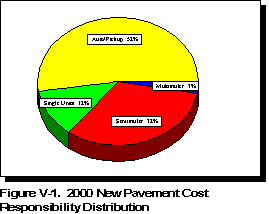 Grading and drainage costs are not separated in FMIS, but a special analysis of grading and drainage costs was conducted for the 1982 Federal HCAS. A survey of several States conducted for this study indicated that grading and drainage factors developed for the 1982 Federal HCAS are still applicable.
Grading and drainage costs are not separated in FMIS, but a special analysis of grading and drainage costs was conducted for the 1982 Federal HCAS. A survey of several States conducted for this study indicated that grading and drainage factors developed for the 1982 Federal HCAS are still applicable.
Pavement Preservation Costs
Table V-10 shows variations in the cost responsibility for 3R pavement costs by vehicle classes and operating weight. The same general relationships seen in Table V-5 between weight, the number and types of axles, and cost responsibility are seen in this table. Cost responsibility increases at an increasing rate as the weight of each vehicle class increases. Single axles contribute more to 3R pavement costs than tandem axles and tridem axles contribute less than tandem axles for vehicles with comparable weights.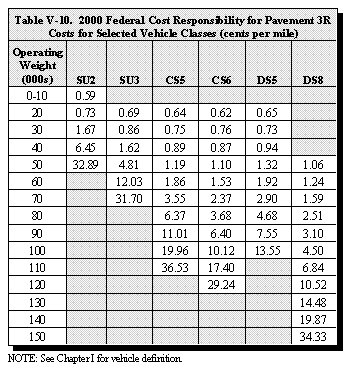
Bridge Cost Allocation Methods
New Bridges
- Simple and continuously-supported spans are considered separately.
- Live load moments are calculated for each vehicle class/weight group, for each functional highway class (based on the mean length of the primary span), and for each bridge support type (simple and continuous). In the 1982 Federal HCAS, the vehicles were aggregated into large groups, all bridges were assumed to be simply supported, all single unit trucks were assumed to be a simple point load, and all combination trucks were assumed to produce a moment that was a simple multiple of single unit trucks.
- The FHWA accounting system now identifies four cost categories versus three in the 1982 Federal HCAS, namely: new bridges, bridge replacement, major rehabilitation, and minor rehabilitation.
- The number of design/cost increments was increased from 8 to 10. The 1982 Federal HCAS aggregated all vehicles producing moments similar to the HS-15 to HS-20 design vehicles into one group. This was too large an aggregation to permit discriminating among the large number of heavy trucks requiring the last increments of bridge design. The effect was that many medium weight vehicles were assigned responsibility for the highest design increment along with the heaviest trucks. Accordingly, an additional increment was created by dividing the HS-15 to HS-20 increment into an HS-15 to HS-17.5 and HS-17.5 to HS-20 increment. The 10 design increments are shown in Table V-13.
Bridge Replacement
Major Bridge Rehabilitation
Other Bridge Improvements
System Enhancements
Uniquely Occasioned Costs
Other Highway Trust Fund Obligations
Mass Transit Account
Summary of Federal Agency Cost Allocation
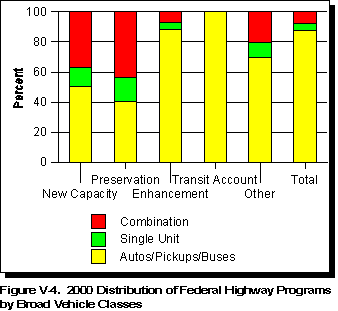 Single unit trucks are responsible for about 11 percent of total highway costs, ranging from about 16 percent of system preservation costs to no responsibility for costs from the MTA. Their overall cost responsibility is 3.7 cents per mile.
Single unit trucks are responsible for about 11 percent of total highway costs, ranging from about 16 percent of system preservation costs to no responsibility for costs from the MTA. Their overall cost responsibility is 3.7 cents per mile.
Registered Weight Federal Cost Responsibilities
All Levels of Government Cost Allocation
Allocation of External and Other Social Costs of Highway Use
Noise
Congestion
Crash Costs
Marginal external crash costs were estimated as the sum of two components:
- Crash costs that are not paid by drivers, individually or collectively, e.g., uncompensated costs to pedestrians struck by motor vehicles, costs of emergency medical response to highway crashes not covered by those injured, etc.
- Costs (or cost savings) associated with possible variations in crash rates with traffic levels. Higher traffic volumes might increase crash rates by increasing the number of multi-vehicle crashes. However, it is also possible that higher traffic volumes might reduce rates for some types of crashes by lowering average speeds and increasing driver awareness.
Responsibility for Social Costs
References
FHWA, The Final Report of the Federal Highway Cost Allocation Study, FHWA, Washington, D.C., 1982.
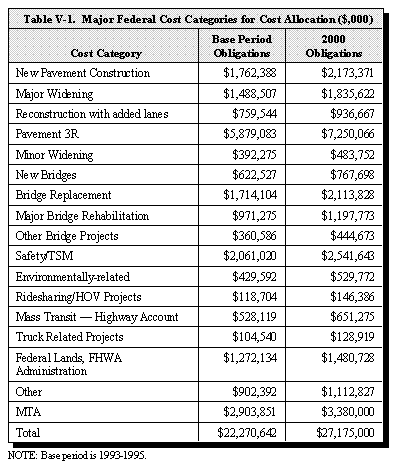


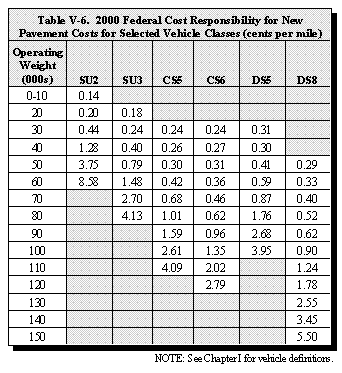
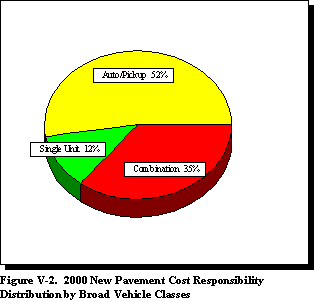
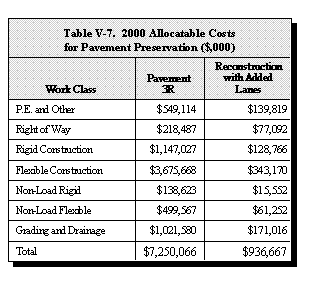

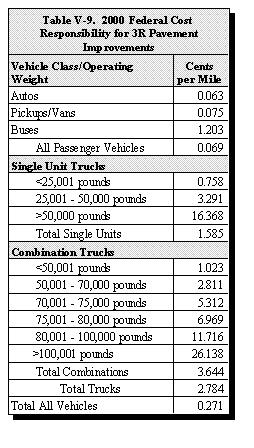
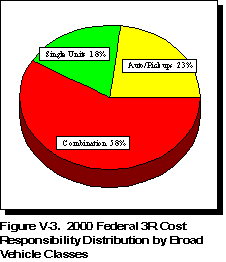
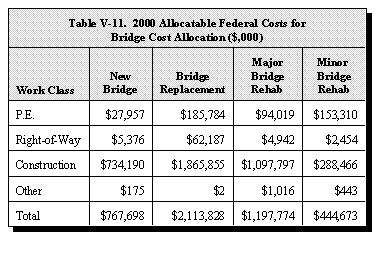
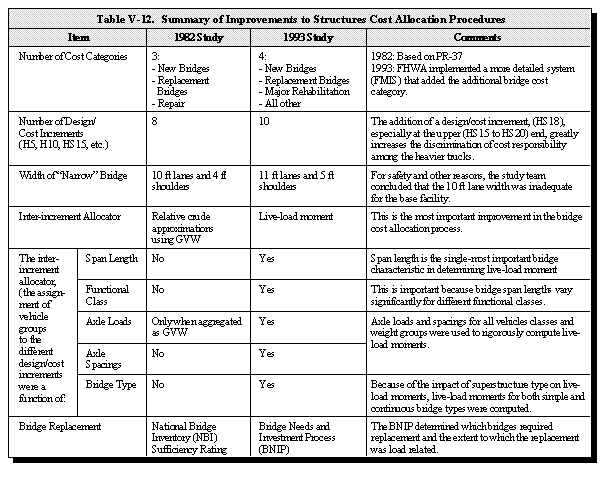
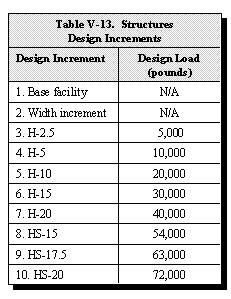
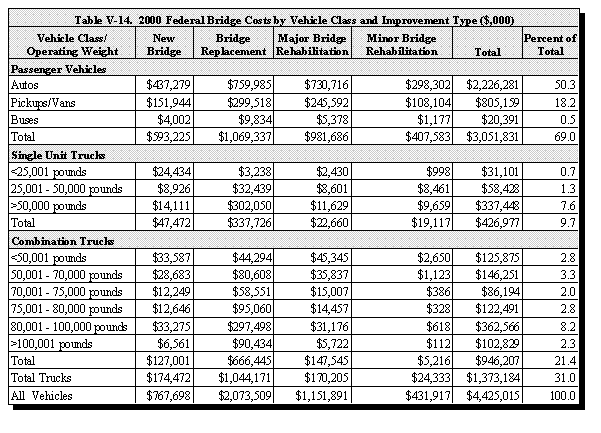
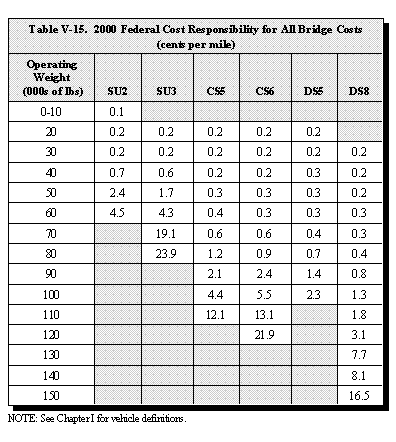
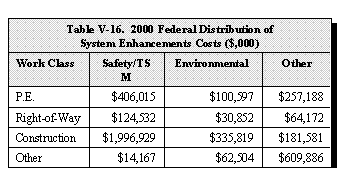
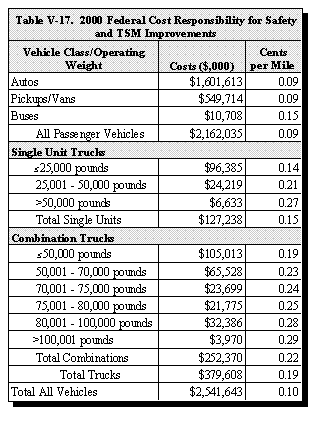
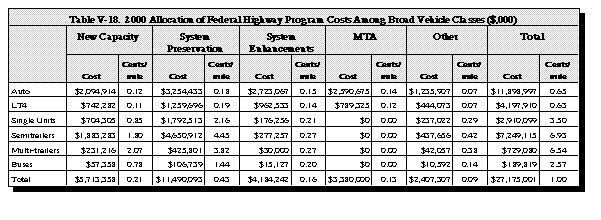
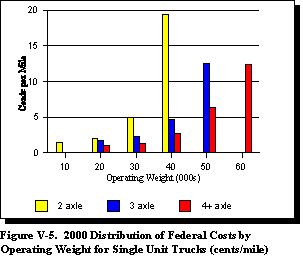
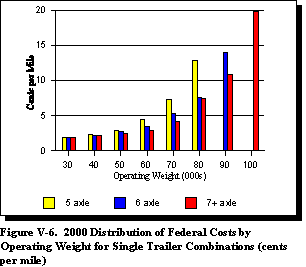
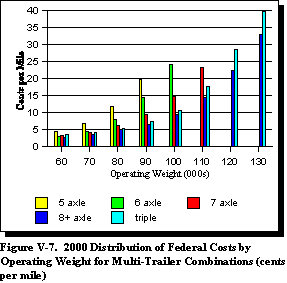
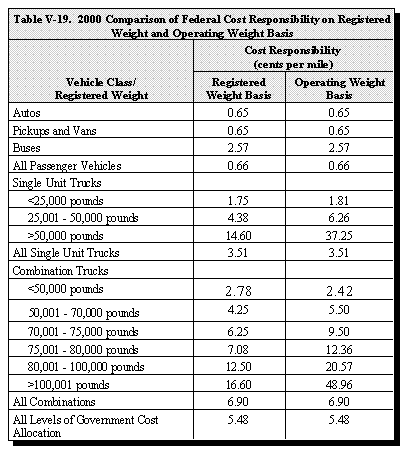
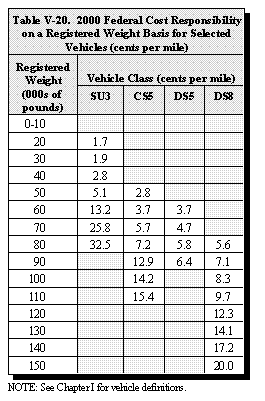
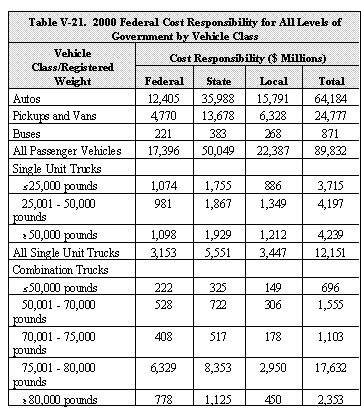
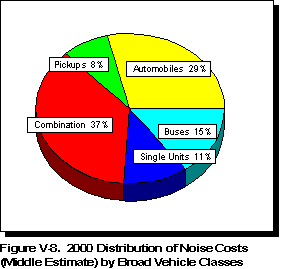
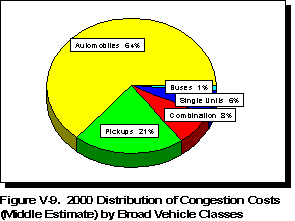
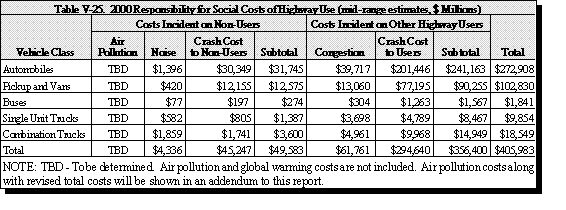
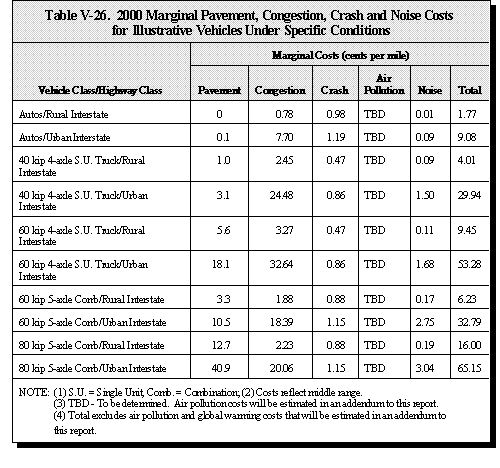
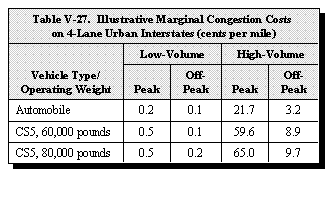


No comments:
Post a Comment